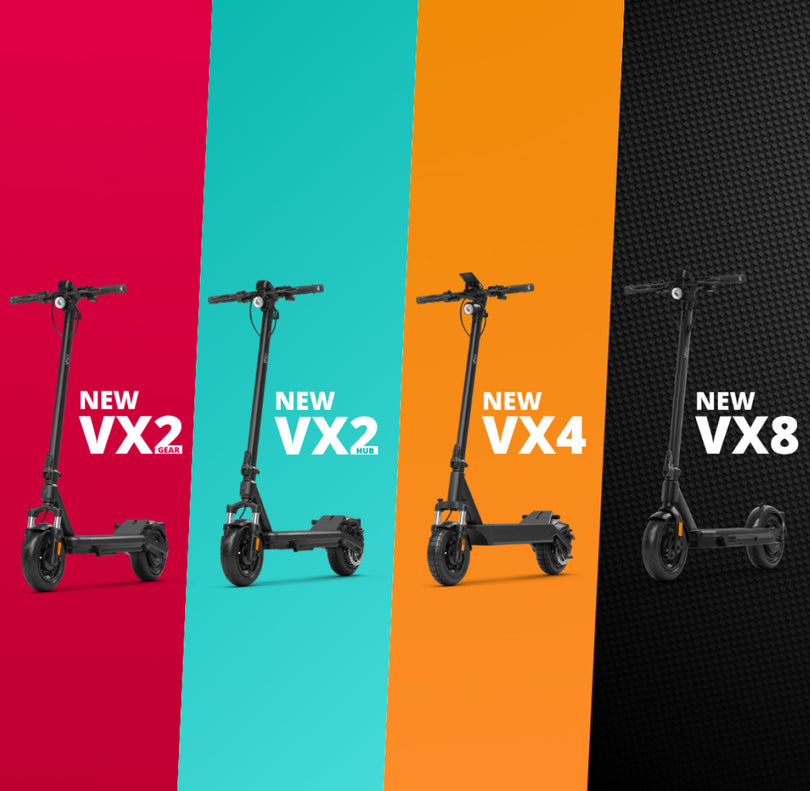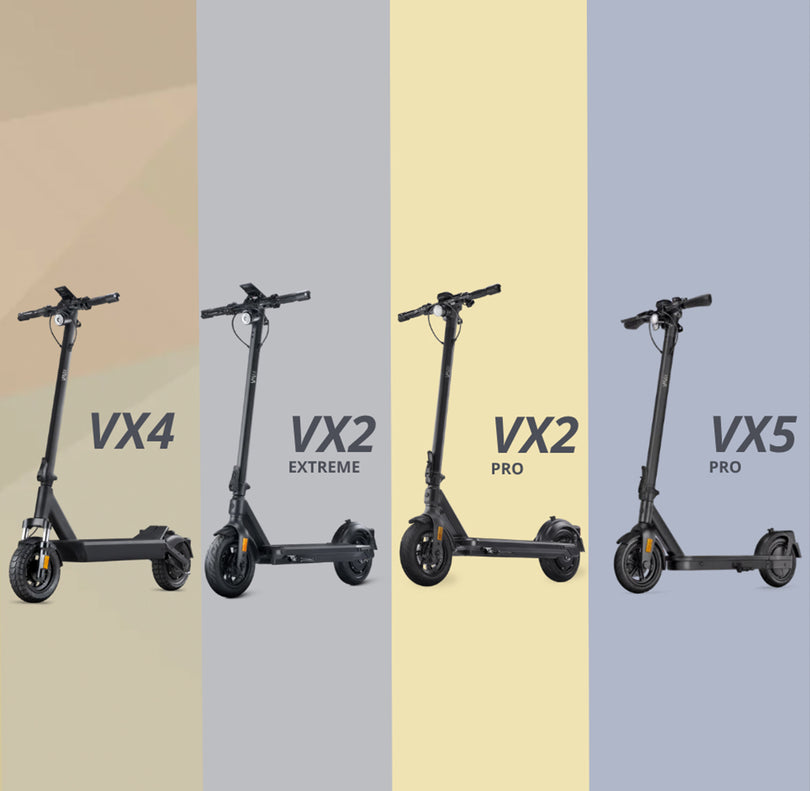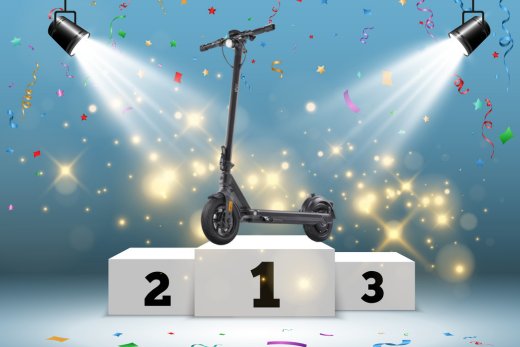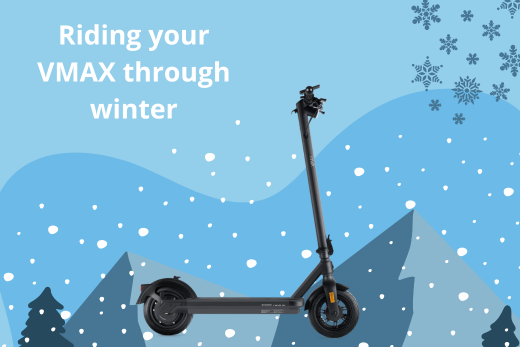How does braking with your e-scooter actually work? That's what we're going to cover in this blog post, where we'll introduce you to the brake system and the fascinating topic of regenerative braking:
Fundamentally, every e-scooter in the VMAX VX series is equipped with a mechanical drum brake at the front and an electronic regenerative brake at the back. You have two brake levers for braking. The left brake lever controls both brakes simultaneously, as usual. The right brake lever allows you to specifically target the regenerative brake in the rear wheel. This way, you can better modulate the braking force and contribute to the non-wear of the mechanical brake. Riding downhill is also much more pleasant, as the regenerative brake allows for good speed modulation and additionally provides a bit more range through energy recovery.
By the way, this can be very well illustrated with the VMAX Connect App (suitable for VX2 Pro, VX3 Pro and VX5) and the new VMAX E-Scooter App (suitable for VX4, R40 Pro, R50 Pro and future models). Learn more about the app here >>>. Just do a bit of regenerative braking while going downhill, and in the app, under details, you can see how the input power drops into the negative.
It's important to note, however, that the regenerative brake is not a standstill brake but is intended merely for energy recovery and gentle speed reduction.
Therefore, it is designed so that you don't become faster when descending, not to bring you to a quick stop. This only happens after 8-9 meters.
If you want to brake to come to a stop or need to perform an emergency brake, please use both braking systems.
But how do the two brake systems actually work?
Drum Brake:
In the drum brake, a brake drum is fixedly connected to the wheel and rotates with the wheel's rotation. Inside this brake drum, which is firmly connected to the e-scooter on the brake anchor plate, are two brake shoes, a spring, and a wheel cylinder. The outward-facing brake shoes do not touch the inside of the brake drum but are pressed inward by springs connected to the wheel cylinder.
When you activate the brake on the handlebar, a cable is tensioned, causing the wheel cylinder to expand. This expansion pushes the springs outward, pressing the brake shoes against the inside of the brake drum. This friction of the brake pads creates a braking force on the brake drum and, thus, on the associated wheel, slowing it down. When you release the tension from your brake lever, the brake retracts, and you can continue riding unimpeded.
Regenerative Brake:
In the regenerative brake, the VMAX's motor serves as an energy-converting generator during braking. You activate the braking process by pulling the left or right brake lever. Through a sensor, it activates the regenerative brake in the electric motor.
Generally, electric motors generate torque by applying a voltage to an electromagnet in a magnetic field and the resulting Lorentz force, which turns the tires. During braking with a regenerative brake, this motion energy, also known as the vehicle's kinetic energy, is converted back into electrical energy. This is achieved by using the wheel's rotational energy to move an electrical conductor in the motor, now acting as a generator. The resulting induction leads to electrical voltage and, thus, energy. The generated electrical energy is directed to the battery, recharging it and allowing you to enjoy your ride on your VMAX e-scooter for longer.
However, a regenerative braking system does not turn your e-scooter into a perpetual motion machine, as energy is lost in the form of heat in every conversion due to electrical resistance.
This was our blog post on the brakes and braking systems of your e-scooter. We hope you've gained some insights and now know a little more about the brakes on your electric scooter.





